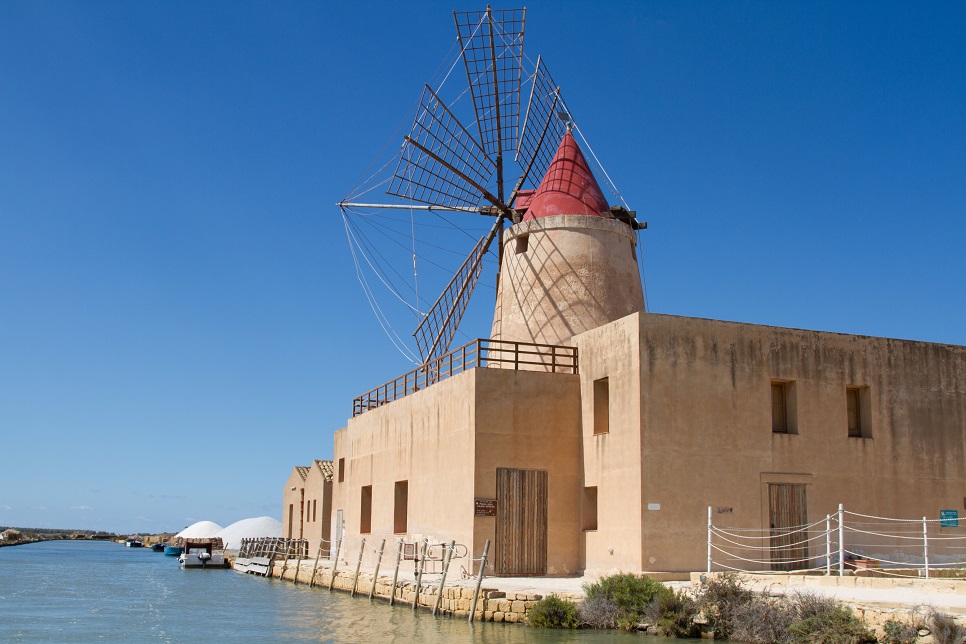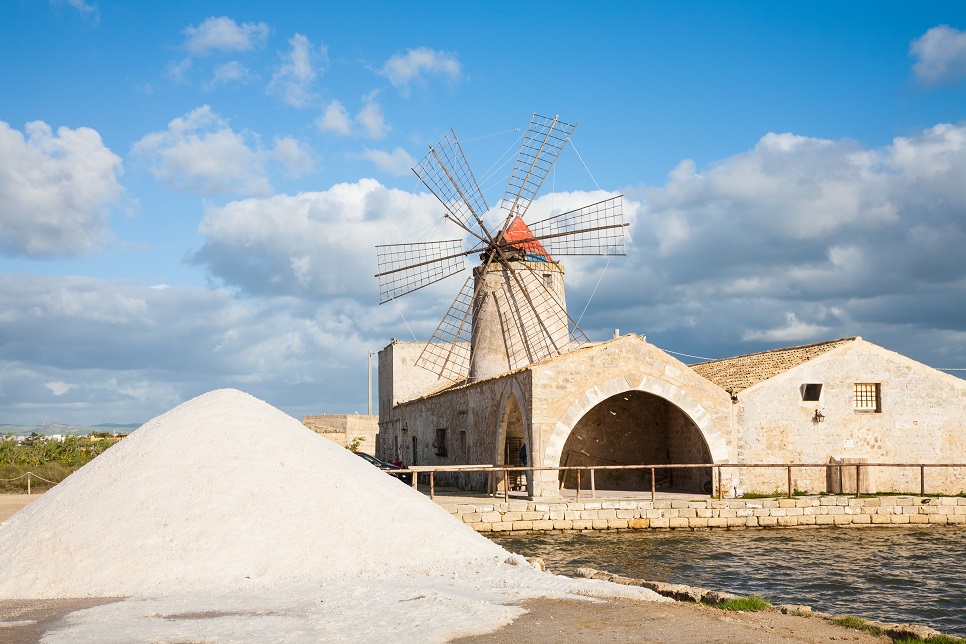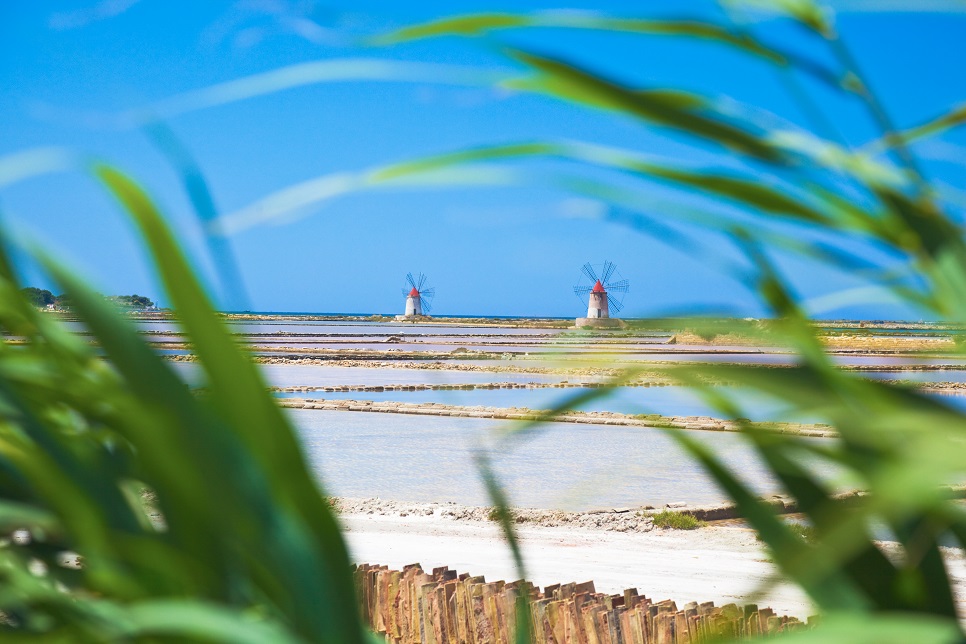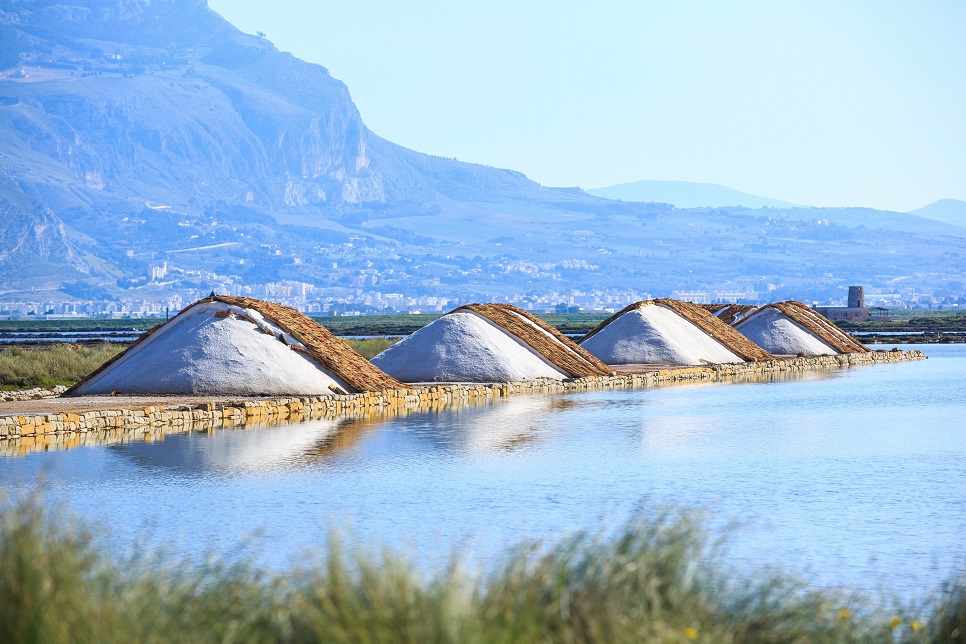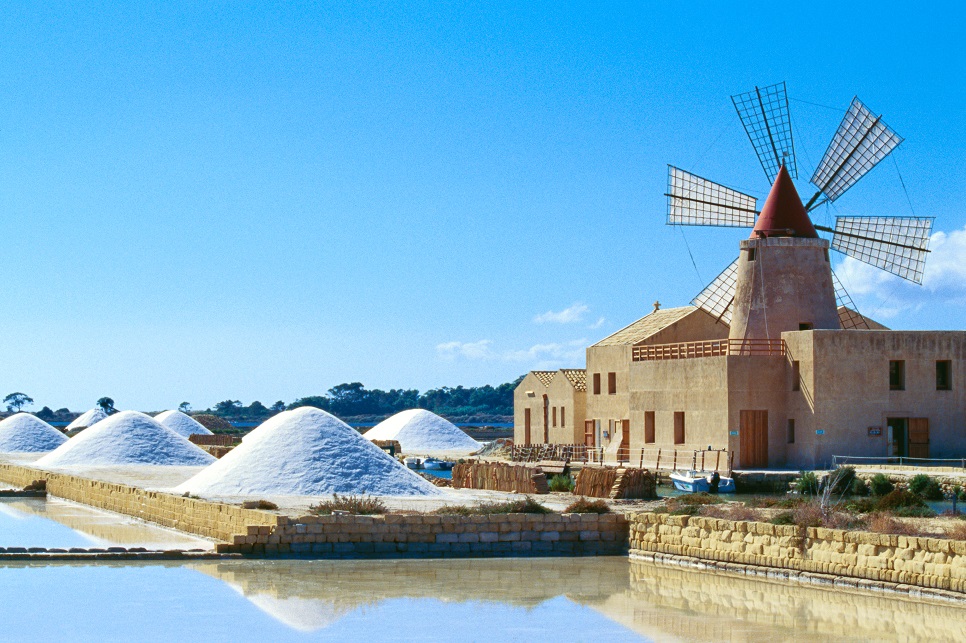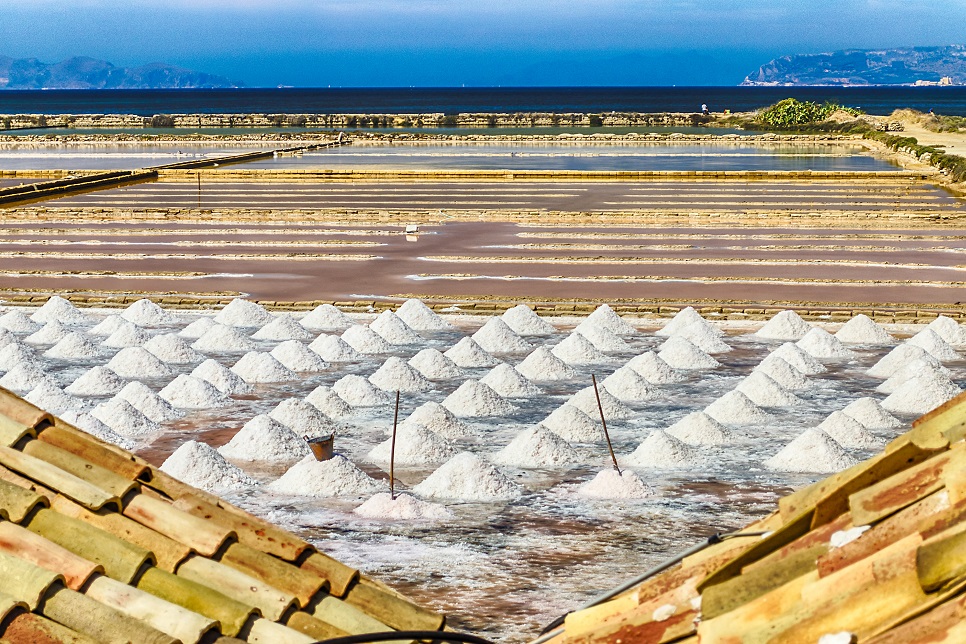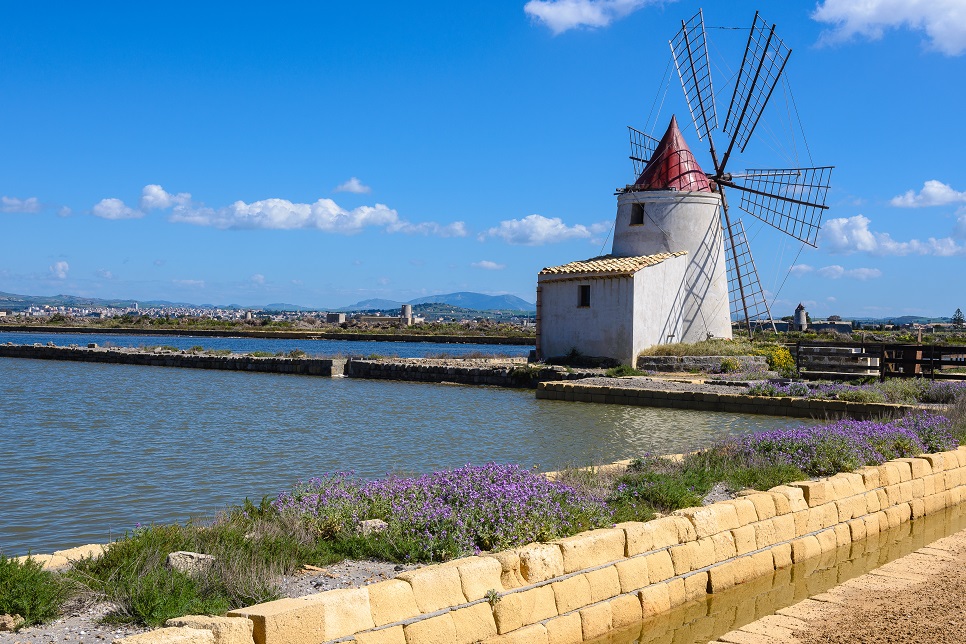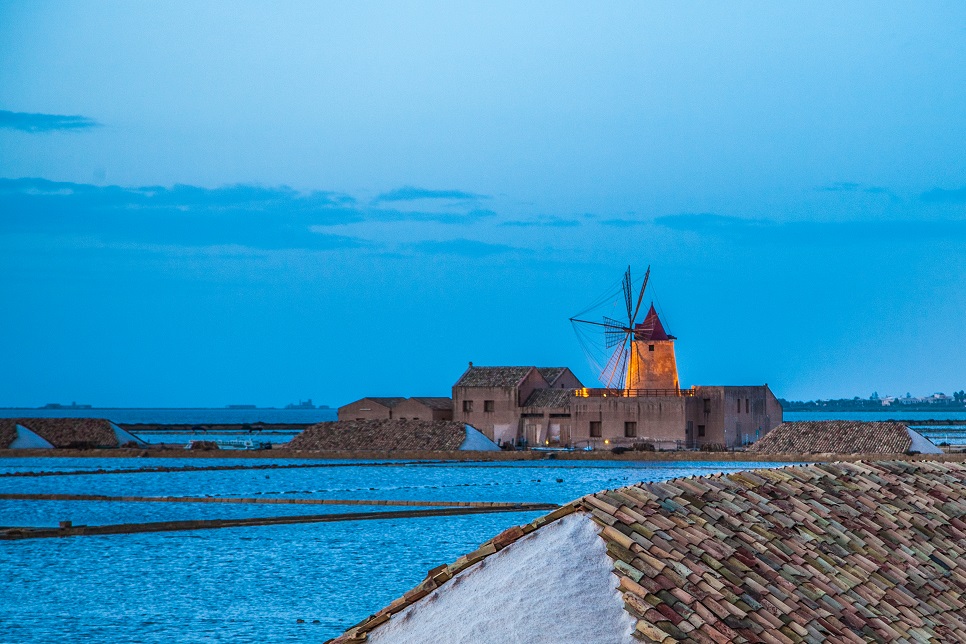The area around Trapani is still strongly identified with its iconic saltpans, now far fewer in number than in the past but still retaining the distinction of being the oldest and last remaining in Sicily.
Dating as far back as the Phoenicians around 2,700 years ago when salt was fundamental for preserving food, the salt pans were at their most prosperous under Aragonese rule and numbered around forty at the end of the 1800’s when over 100,000 tonnes of salt were produced each year. Today there are some ten saltpans with two main areas of production, at Nubia and at the ‘Stagnone’, the largest lagoon in Italy to the north of Marsala.
The flavour of the salt is exceptional: completely natural and untreated, the salt has a higher concentration of potassium and magnesium but less sodium chloride than common salts and is available in many specialist food shops.
Visit the salt pans at Stagnone for the dramatic landscape, punctuated by windmills, and the views across to the Egadi Islands. The salt museum between Trapani and Marsala is highly recommended for its complete history of the salt pans and their development. Take a ferry over to Mothya, a Phoenician archaeological site, on Isola San Pantaleo.
View all our villas in Western Sicily
The Saltpans
Salt production and dramatic landscapes in western Sicily
